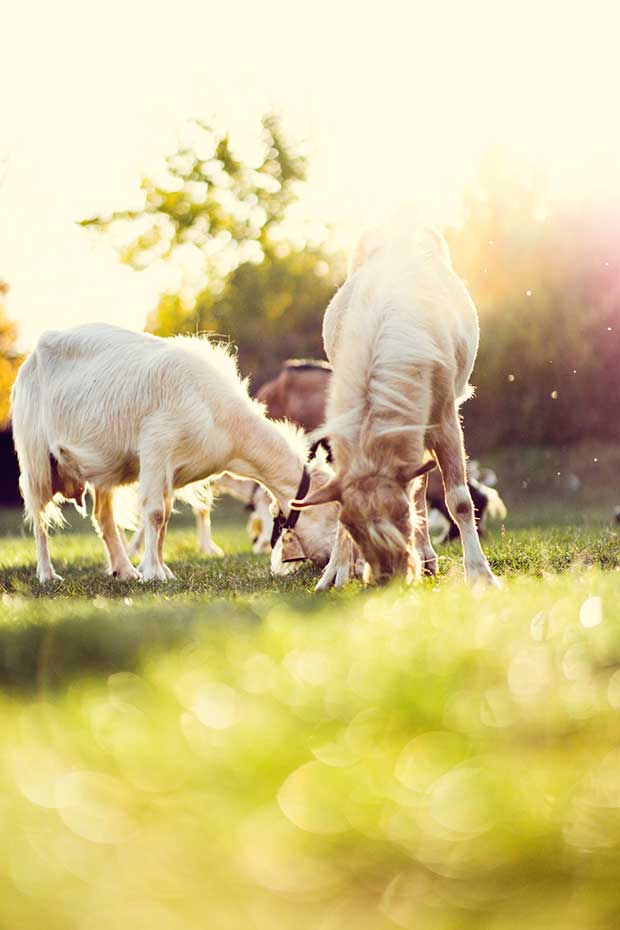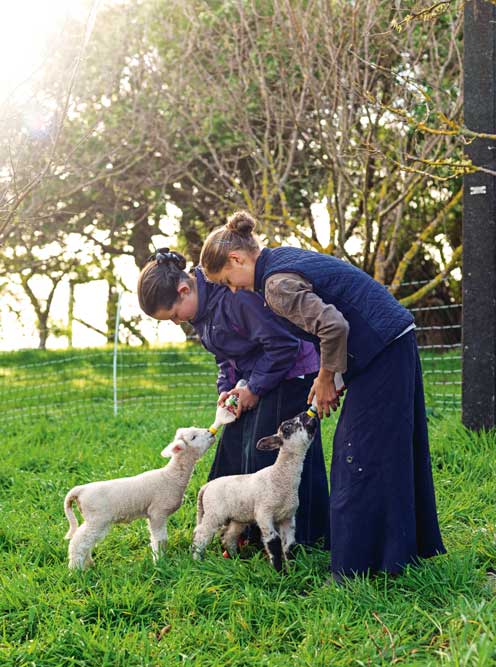Everything to do in August to keep livestock healthy (hint: get those vaccinations, buy calves)

With spring just around the corner, it’s time to get the paddock in check.
Words: Nadene Hall
1. If grass is slow to start growing in your area, you need to ensure you have enough supplemental feed to last until it does. This needs to be a quality feed with good protein levels.
2. If you have good pasture coming away, ration it carefully so it’s not trampled and wasted.
3. Spray/soak navels of newborn livestock with iodine as soon after birth as possible to avoid navel ill (also known as joint ill). This is an infection that enters through the navel, is very painful, requires careful (costly) treatment and can kill a young animal.
4. Lactating mothers will be drinking a lot more water than normal. They need easy access to clean water in clean troughs. Troughs also need to be made safe so gambolling lambs and kids can’t accidentally fall in and drown.
The easiest option is to place boards over most of the trough so there is just enough room for animals to drink around the edge.
5. If you want to rear calves, there will be a good supply available now. It is better to buy calves for rearing direct from a farmer you know and trust. Calves need to receive four days of colostrum, the relevant vaccinations and good after-birth care (eg, navels treated with iodine).
If you do buy from a sale, look for strong, healthy-looking calves with clear eyes, a dry navel and no signs of scouring. Try to find out their background and talk to their owner if possible. Don’t be tempted to buy a sickly-looking calf if you want to make a profit – it will never catch up or be as valuable as a healthy calf.
ONE VERY EASY WAY TO KEEP LIVESTOCK ALIVE
When you have pregnant livestock or newborns, there’s one simple thing you can do to ensure they stay healthy.
Vaccinations are simple jabs that will allow pregnant mothers to pass on immunity to their babies via their colostrum for 6-8 weeks. A vaccination schedule should then continue for young livestock to ensure a growing animal’s good health.
There are five sudden killers of healthy newborn calves, lambs, kids and cria (baby alpaca). Pulpy kidney, blackleg, malignant oedema, tetanus and black disease are all clostridial diseases, bacteria that quickly form exotoxins in an animal. There can be no outward symptoms; an animal can get sick and die in hours.

The bacteria are spore-forming. Spores can survive for years in soil, dust and water, and are also found on the skin of livestock. It usually takes something like an animal getting a bruise or a small cut which then allows the bacteria to strike.
Talk to your vet to get advice on the right vaccine to use. Generally, this is a ‘5in1’ product (covering the five main clostridials), or they may advise other options for specific needs. For example, some vaccine products contain minerals, others include injectible wormers, and some (eg 6in1, 7in1, 10in1) cover other, rarer clostridials.
The important thing is to get the timing right. Vaccination will be an initial injection, then a booster shot (usually 2-6 weeks later, depending on the product).
There can be different products for adults and young livestock which is why it’s important to talk to your vet and get their recommendation.
ARE YOUR ANIMALS DEFICIENT?
Cattle
Adults and calves may be deficient in copper. Your vet will need to do the relevant tests to find out. Symptoms include a lighter-coloured coat, anaemia, weight loss, scouring and poor growth rate. Early-born calves may be affected if their mothers are. Remedies include drenching, a copper bullet or an injection.
Sheep
Sheep and lambs may be deficient in iodine and selenium. Inland areas and those with high rainfall are most at risk from iodine deficiency. Iodine is important for pregnant sheep and developing lamb/s. Symptoms of iodine-deficiency include a high death rate in newborn lambs. Selenium-deficient soil is relatively common.
Lambs are more commonly affected. Symptoms in sheep include ill-thrift, diarrhoea, low milk production, low conception rates, and
white muscle disease.
Love this story? Subscribe now!
 This article first appeared in NZ Lifestyle Block Magazine.
This article first appeared in NZ Lifestyle Block Magazine.
